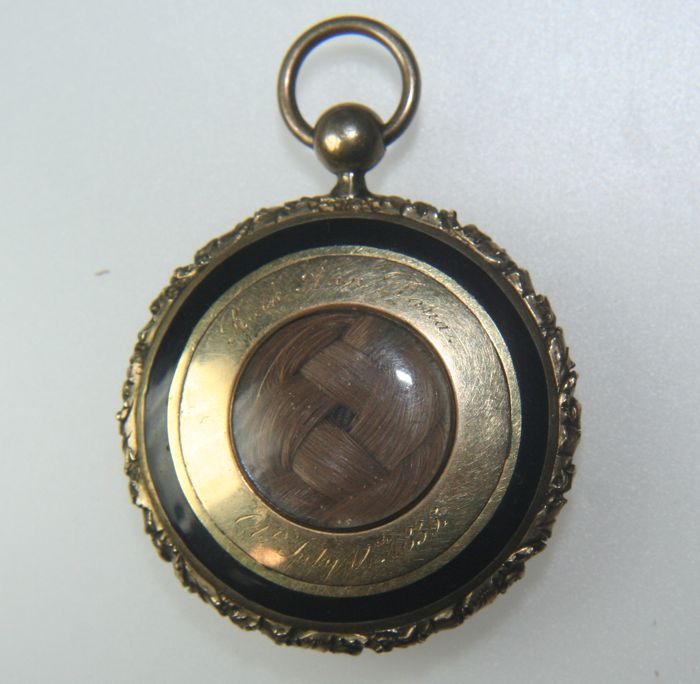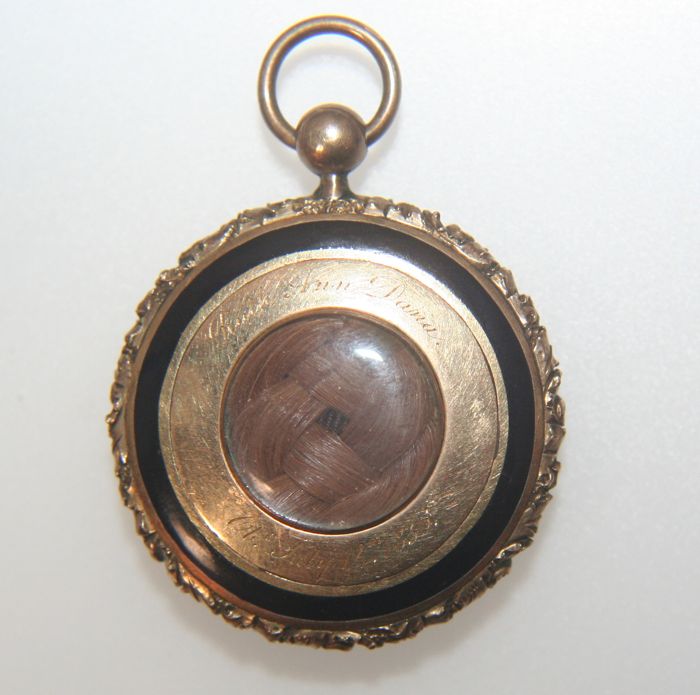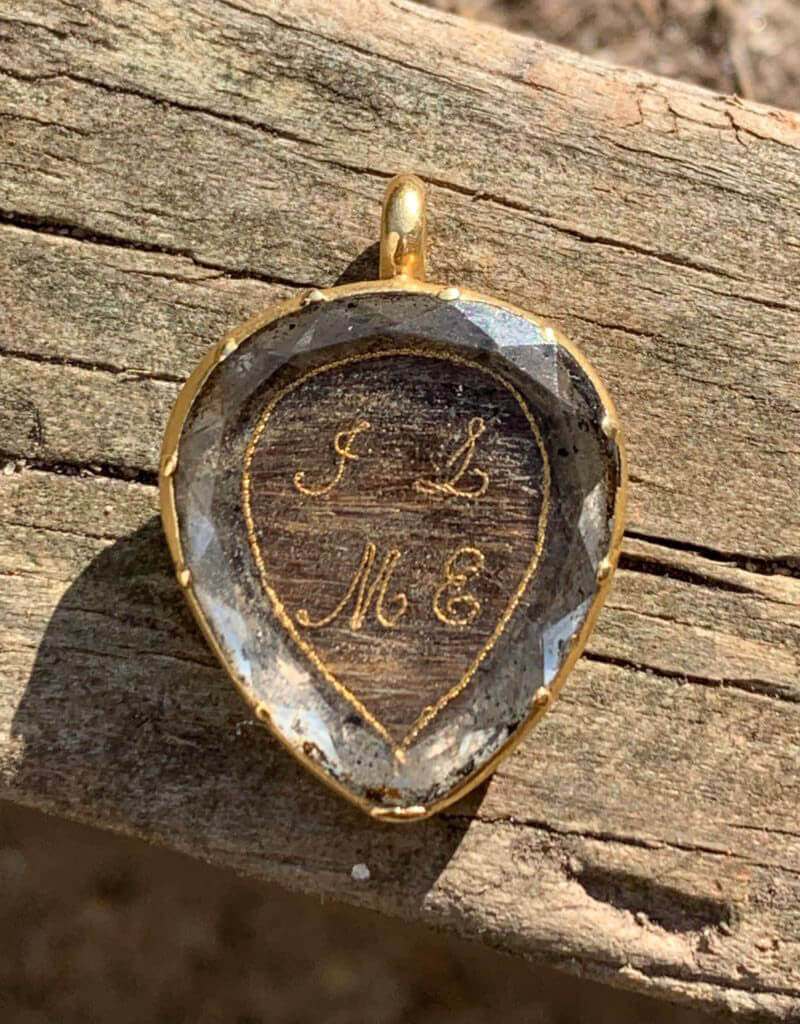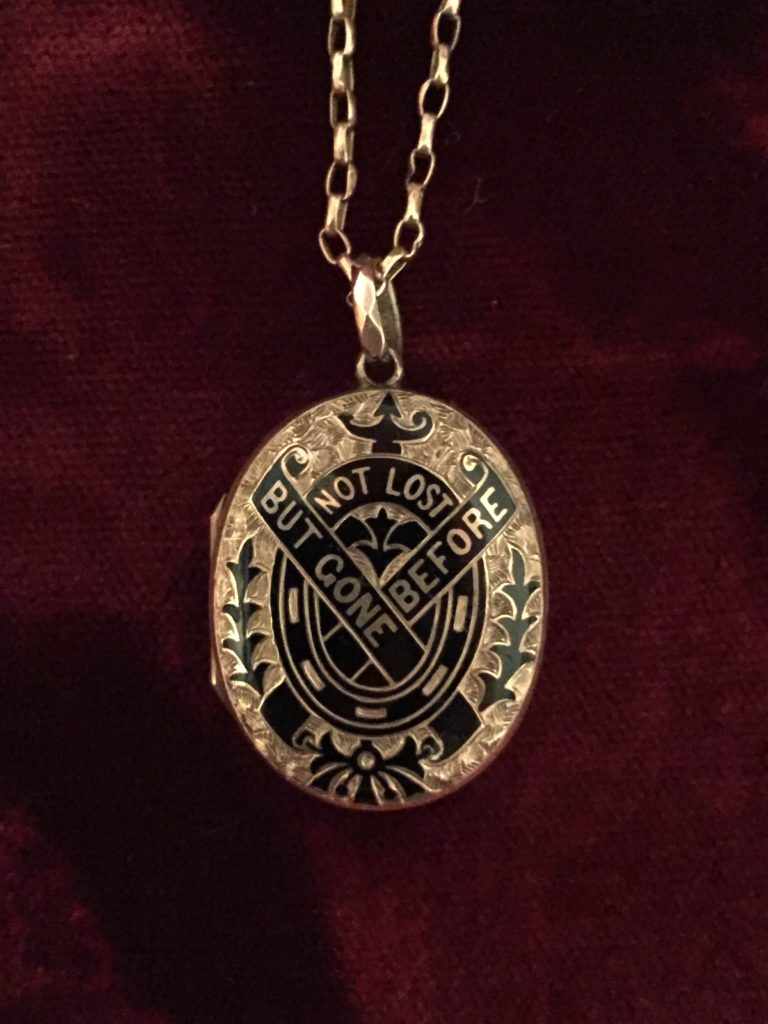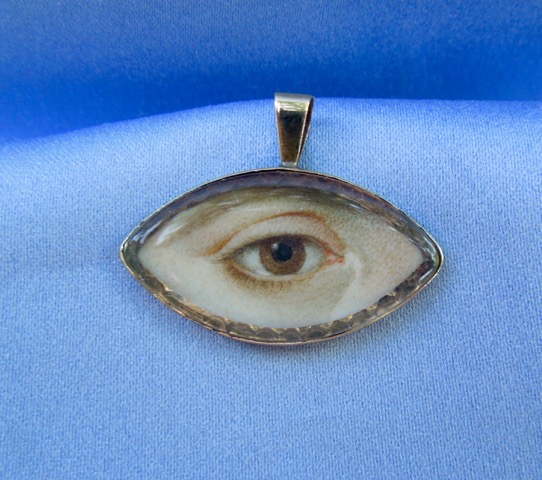Analysis of a Locket: July 14th 1836, Gold and Hair
This particular style is quite typical of the 1830s and 40s, basically coinciding with the transition of the Neoclassical movement to the Neo-Gothic style that was prevalent at the time, you can often find pieces like this with the Neo-Gothic lettering of ‘In Memory Of’ or other sentiments surrounding where the black enamel is on this piece. The surrounding floral work to the gold is very popular in the 1830s and can be found in rings, lockets and other peripherals in jewellery. This style actually dates back to around 1811, but didn’t really gain traction until later. Some call it a ‘pie crust’ surround, but I don’t like that term, as I find it denigrates the floral patterns and the stylistic transition in art. For more on that, check Art of Mourning in rings and lockets for the 1830 period, also, I’ve got some posts on the blog about it as well, so have a search.
They can be quite small as well, I’ve seen variations down to 1cm (with a small twist of hair in the back) in diameter and increase up to about 5cm. Due to the rise in photography post 1840, you’ll find a lot of locket variations from about 1845-50 with early photography inside. This style was popular enough that it was often made in both low and high gold content, so it’s best to get it tested if you care about that sort of thing.
It’s obviously a mourning piece, from the black enamel to the charming dedication. The wonderful dual hair is much more rare for a piece like this and to find it possibly re-purposed for another family member or dedicated to the passed individual with the living one having their hair or dedication inside isn’t unheard of, but it’s much more uncommon than finding the singular dedication. To me personally, I find that dual dedications are more precious than any diamond, as it is much more personal for the family and that love is what it’s all about for me.
The hair itself is a bold and basic weave with the twist, which I think makes it a little more personal, as professionally table-worked hair can often put the sentimentality in the back seat, as it were, so this is a really nice and seemingly instant (as the hair would have been cropped without pre-planning for it to be made), so the dedication and the piece would have been commissioned close to the passing of the loved one. As such, the piece itself would have been manufactured first and purchased/tailored to the person who commissioned it, rather than being a one-off made for the occasion. Once again, very sentimental.
So, when you see a piece like this without the black enamel or dedication, they were sold as love tokens as well, they’re not all mourning (which is a great problem when people discuss/sell these pieces with hair, they always skew to the morbid), though this one is quite obviously morning. It was a popular style and one must question what the purpose of the piece was for at all times and how it would have been worn. Also, the style was popular in the UK, to some degree on the Continent (France, Germany and Eastern Europe) and also in the US.




